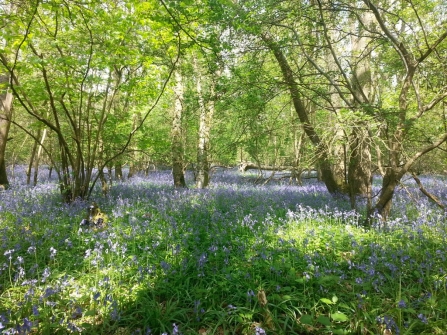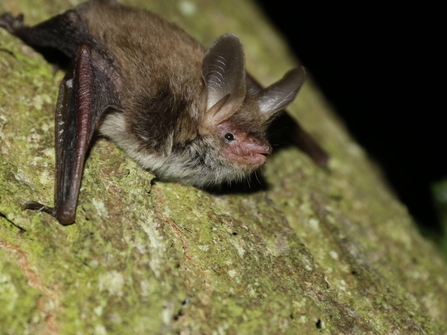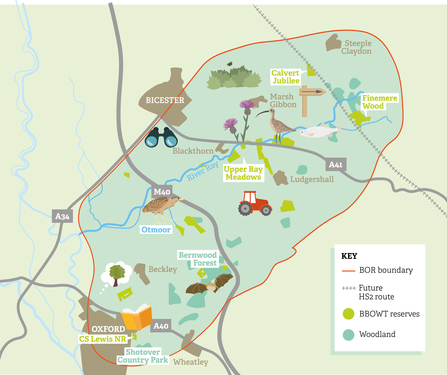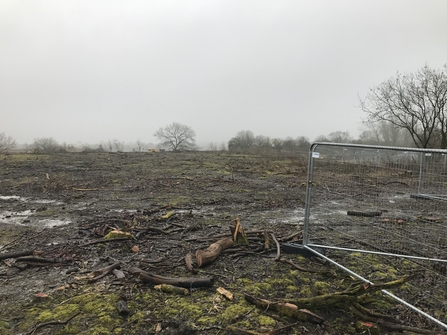
Springtime bluebells at Finemere Wood. Photo by Tim Read

Springtime bluebells at Finemere Wood. Photo by Tim Read
For the last few years, the Berkshire, Buckinghamshire and Oxfordshire Wildlife Trust (BBOWT) has been working with Natural England to designate an area south of the Claydons as a new Site of Special Scientific Interest (SSSI), following the discovery of the rare Bechstein’s Bat in the area. However, Natural England have informed the Trust that it has had to pause all work on the proposed Bernwood SSSI because of budget cuts.
SSSIs are one of the most important tools available for protecting the UK’s most valuable habitats and species. These designations provide legal protection to areas of exceptional ecological or geological importance, helping to safeguard rare wildlife, prevent damaging developments, and guide land management in ways that enhance biodiversity. For vulnerable species like the Bechstein’s bat - one of Britain’s rarest mammals - SSSI designation ensures their habitats are preserved and managed for long-term survival. Without this formal recognition, even nationally significant sites can be left exposed to irreversible harm from poorly placed infrastructure and development.

Bechstein's bat - Chris Damant
Last year, the Trust was awarded half a million pounds to lead on a project to reconnect the fragmented Bernwood, Otmoor and Ray regions, and the Bernwood Forest forms a key part of the project’s ambitions. Enhancing and expanding ancient woodland, developing new habitat mosaics and increasing habitat connectivity are vital to protecting and restoring one of the best remaining ecologically important landscapes in southern England. The Bernwood Forest was once a medieval royal hunting forest, and it includes ancient woodland that supports vulnerable species such as Bechstein’s bats. The new Bernwood SSSI would have been a key step to reconnecting the fragments of this ancient forest.
Instead, the surrounding area will be subject to an application for a large solar farm, meaning BBOWT’s Finemere Wood nature reserve will be left sandwiched between HS2 and a solar farm, jeopardising the future of the species that live within it.

The Reconnecting Bernwood Otmoor and Ray project area. © Good Thinking Communications
Estelle Bailey, Chief Executive of the Berkshire, Buckinghamshire and Oxfordshire Wildlife Trust, said:
“You would be hard pressed to find a better current example than this of the disparity between the priority given to environmental protections and the priority given to damaging infrastructure. Our team has been working closely with amazing colleagues at Natural England to provide greater protections to an area already severely impacted by HS2. We are sure that the hard-working staff at Natural England are just as disappointed as we are that this important work has been stopped given the huge amount of time and energy they have put into it. It is truly astounding that billions can be spent on HS2, but the Government cannot allocate sufficient funds to designate and protect neighbouring woodland. Instead, the surrounding area will be subject to an application for a solar farm, which, whilst we support renewable energy, is in entirely the wrong location.”

Vegetation clearance by HS2 Ltd at part of BBOWT's Calvert Jubilee reserve that was commandeered by the construction firm. Picture: Mark Vallance
This announcement comes amid the on-going debate over the Government’s Planning and Infrastructure Bill. The proposed bill threatens to reverse decades of environmental regulations, leaving developers free to build without considering the impact on local wildlife or communities. The lack of funding for new designations and Natural England’s budget cuts that have lead to it scrapping plans for a Bernwood SSSI confirms environmentalists’ suspicions that this Government has no intention of investing in nature and illustrates why we should be wary of any claims otherwise.
BBOWT is calling on the Government to ensure funding for environmental protections is made available and to reconsider the cumulative impact of infrastructure projects on irreplaceable natural habitats. The Trust remains committed to working with partners, local communities, and policymakers to find solutions that support both renewable energy and nature recovery. The climate and biodiversity crises must be tackled together, not in competition, and protecting places like the woodlands that would make up the Bernwood SSSI sits at the heart of this.